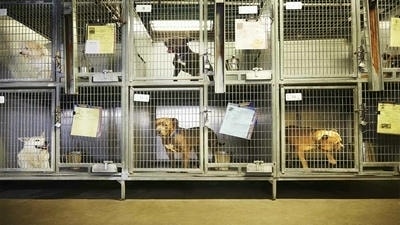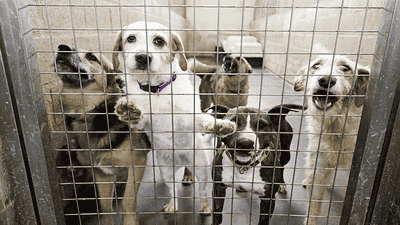
Pet adoption and rescue are vital components of animal welfare, but one of the most effective ways to address the root cause of shelter overpopulation is through spaying and neutering. Every year, millions of pets enter shelters, and many of them are euthanized due to overcrowding. Spaying (removing the ovaries and uterus of female animals) and neutering (removing the testicles of male animals) are surgical procedures that prevent pets from reproducing. These procedures not only help control the pet population but also offer significant health and behavioral benefits.

Spaying is the surgical removal of a female animal’s ovaries and uterus. This procedure prevents pregnancy and eliminates the heat cycle.
Neutering is the surgical removal of a male animal’s testicles. This procedure prevents the production of sperm and reduces testosterone levels.
Both procedures are performed under general anesthesia by a licensed veterinarian. They are considered routine surgeries with minimal risks and short recovery times.

Spaying and neutering prevent unplanned litters, which are a significant source of animals in shelters. By addressing the root cause of overpopulation, these procedures help reduce the strain on shelters.
With fewer animals entering shelters, resources such as food, space, and medical care can be allocated more effectively to the animals that need them most.
When shelters are less crowded, they can focus on finding permanent homes for their animals. This increases the chances of adoption for pets in need.
Fact: There is no medical benefit to allowing a pet to have a litter before spaying. In fact, early spaying reduces the risk of certain cancers.
Fact: While spaying and neutering can slow metabolism slightly, obesity is primarily caused by overfeeding and lack of exercise.
Fact: Many low-cost clinics and nonprofit organizations offer affordable spaying and neutering services. The long-term benefits far outweigh the initial cost.
Fact: Spaying and neutering are safe, routine procedures that improve the quality of life for pets. The temporary discomfort is far less harmful than the risks associated with overpopulation.

Spaying and neutering help reduce the number of animals entering shelters, allowing rescue organizations to focus on providing care and finding homes for existing animals.
Neutered pets are often better behaved, making them more attractive to potential adopters. Spayed pets are also less likely to have health issues, reducing the long-term costs of adoption.
By reducing overpopulation, spaying and neutering help shelters achieve no-kill status, where no adoptable animal is euthanized due to lack of space or resources.
If you have a pet that is not yet spayed or neutered, schedule the procedure with your veterinarian. Early intervention is key to preventing overpopulation.
Donate to or volunteer with organizations that provide low-cost spaying and neutering services. These programs make it easier for pet owners to access these essential procedures.
Spread awareness about the importance of spaying and neutering. Encourage friends, family, and community members to have their pets sterilized.
Choose to adopt pets from shelters or rescue organizations rather than purchasing from breeders. This helps reduce demand for breeding and supports shelters’ efforts.
By fostering or volunteering with a shelter, you can directly contribute to the care and adoption of animals in need. Many shelters also rely on volunteers to promote spaying and neutering initiatives.
In a mid-sized city, a local shelter partnered with a spay-neuter clinic to offer free sterilization surgeries for low-income families. Within two years, the shelter’s intake of puppies and kittens decreased by 30%, allowing them to focus on rehoming adult animals.
A community with a high stray cat population implemented a trap-neuter-return (TNR) program. Over five years, the number of stray cats decreased by 50%, and the program became a model for other communities.
A shelter in a rural area began offering spay-neuter vouchers to adopters. As a result, the number of adoptions increased by 20%, and fewer animals were returned to the shelter due to behavioral or health issues.
Trap-Neuter-Return (TNR) is a humane approach to managing feral cat populations. Cats are trapped, sterilized, vaccinated, and returned to their original location.
Volunteer with or donate to organizations that run TNR programs. If you encounter feral cats in your area, contact local rescue groups for assistance.
The ultimate goal is to create a world where every shelter is a no-kill shelter. Spaying and neutering are critical steps toward achieving this vision.
By working together—pet owners, veterinarians, shelters, and rescue organizations—we can reduce overpopulation and ensure that every pet has a loving home.
Spreading awareness about the importance of spaying and neutering is essential to creating lasting change. Advocating for policies that support these initiatives can also make a significant impact.
Spaying and neutering are not just surgical procedures; they are powerful tools in the fight against shelter overpopulation. By preventing unplanned litters, reducing the number of animals in shelters, and improving the health and behavior of pets, spaying and neutering save lives. As pet owners and advocates, we have a responsibility to take action. Whether you spay or neuter your pet, support spay-neuter programs, or educate others about their importance, every effort counts. Together, we can create a world where every pet has a chance for a happy, healthy life in a loving home.